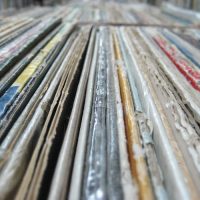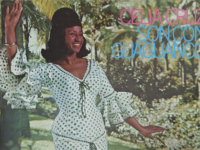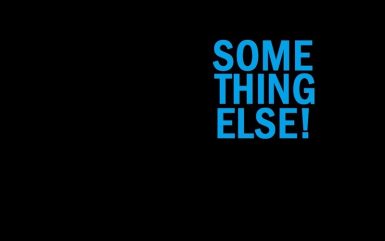Jaime Ospina worked with a powerful group of musicians for five days in the Lechehouse Music studios in Buda, Texas to produce The Vessel, a challenging and innovative album.
A founding member of the group Superfonicos, Ospina enlisted Grupo Fantasma member Beto Martinez to engineer and mix these 10 engaging songs and play guitar along with Fumihoito Sugawara and Mauro Lopez. Ospin, using a workshop approach, worked closely with drummers Alex Marrero, Fabian Rincon, John Speice, Robb Kid and Daniel Sanchez; percussionists Victor Cruz, Noah Mosgofian and Nick Tozzo, bassists Greg Goodman, Nicolas Sanchez and Jaime Ospina; keyboardists Peter Stopschinski and Stefano Intelisano; and sax and flute player Joe Woullard, among others.
Ospina also contributed to the gaita and gauta, wind instruments that are the main melodic tools of The Vessel. Additionally, the composer provided bass parts. The result is an album reflecting a mix of Cuban, Colombian and African elements. Ospina, a music educator, successfully combined these elements to celebrate the African diaspora. According to Ospina, The Vessel is a meditation of resilience.
“El Llamado” featured the gaita. The song reflects the calling of nature and the calling of music and combines percussion and acoustic piano, which reflects the central theme. “El Viento (The Wind)” is a polyrhythmic masterpiece. With its improvised sections, the song follows the themes established by Ospina’s gauta. Touches of marimba and guitar add to the mix before a recompilation of the central musical theme. The result is a joyous tune, and a fitting lead-in to the title song.
Kalu James, Emilie Basez and Kate Roberson provide the haunting vocals and lyrics for “The Vessel,” which translates to “La Vasija” in Spanish. The song covers thousands of years of humanity’s journey from Africa. Subtle guitars, expressive drumming, and equally descriptive lyrics set the stage for a musical journey that asks more questions than answers. The song is a masterpiece that celebrates the endurance of African culture.
“Rencores” features a dynamic tenor sax solo by Joe Woullard of the band Hard Proof. Fender Rhodes is also prominent in this fast-paced, jazzy number. “Amanaciendo,” meaning “Lovebirthing” in English, combines reggae and cumbia with its prominent conga, rim work, and gauta. The extended bluesy guitar work takes the song to another plane.
“El Closet” is equally dynamic. The song’s title refers to being trapped by one’s own perceived limitations. “El Closet” also refers to the more contemporary meaning of a closet as it relates to sexual identity. The jazz-tinged piano solo complements the conga/bongo backing. Touches of accordion also enhance the song’s melodic core, while Ospina’s gauta provides expressive solos.
“A Dios,” which translates to “To God,” is also intended to say “adios.” Peter Stopschinski’s theremin line synth lines are powerful and unusual, especially as they bounce off the clean, melodic electric guitar rhythm parts. The guitar solo is enchanting, building towards a mysterious and captivating conclusion.
In the end, The Vessel/La Vasija is a fascinating journey with compelling elements that are rewarding to listen to.



